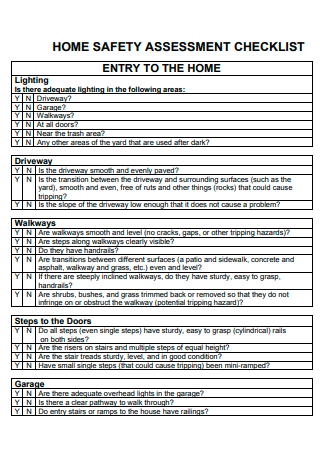

Age Safe America calls falls “a preventable epidemic” and began a “Grab Bars are the New Seatbelts” campaign. Most in-home falls occur in the bathroom, says Gros-Daillon.
Dementia home safety checklist install#
Install nonslip flooring, and cover all cords and wires. If there’s a pet or child in the home, be sure to keep toys picked up. Remove trip hazards. Area rugs, electrical cords, low tables, and ottomans are all risks.Do not leave the person alone in a car.Store items that may trigger a person’s instinct to leave, such as coats, hats, pocketbooks, keys and wallets.Label all doors with signs or symbols to explain the purpose of each room.Create indoor and outdoor common areas that can be safely explored.Monitor noise levels to help reduce excessive stimulation.Use safety gates or brightly colored netting to prevent access to stairs or the outdoors.Put hedges or a fence around the patio, yard or other outside common areas.Place a pressure-sensitive mat in front of the door or at the person's bedside to alert you to movement.Install warning bells above doors or use a monitoring device that signals when a door is opened.Use black tape or paint to create a two-foot black threshold in front of the door.Camouflage doors by painting them the same color as the walls or covering them with removable curtains or screens.Cover door knobs with cloth the same color as the door or use safety covers.(Do not leave a person living with dementia unsupervised in new or changed surroundings, and never lock a person in at home.) Place deadbolts out of the line of sight, either high or low, on exterior doors.Do not leave someone with dementia unsupervised if new surroundings may cause confusion, disorientation or agitation.ĭownload, print and keep the checklist handy to prevent dangerous situations and help maximize the person living with dementia’s independence for as long as possible.


If the person is still safely able to drive, consider using a GPS device to help if they get lost.Reassure the person if he or she feels lost, abandoned or disoriented.Involve the person in daily activities, such as folding laundry or preparing dinner.Consider reducing – but not eliminating – liquids up to two hours before bedtime so the person doesn’t have to use and find the bathroom during the night. Ensure all basic needs are met, including toileting, nutrition and hydration.Identify the time of day the person is most likely to wander (for those who experience “ sundowning,” this may be starting in the early evening.) Plan things to do during this time - activities and exercise may help reduce anxiety, agitation and restlessness.Provide opportunities for the person to engage in structured, meaningful activities throughout the day.The following tips may help reduce the risk of wandering and can bring peace of mind to caregivers and family members however, these actions cannot guarantee that a person living with dementia won’t wander.


 0 kommentar(er)
0 kommentar(er)
